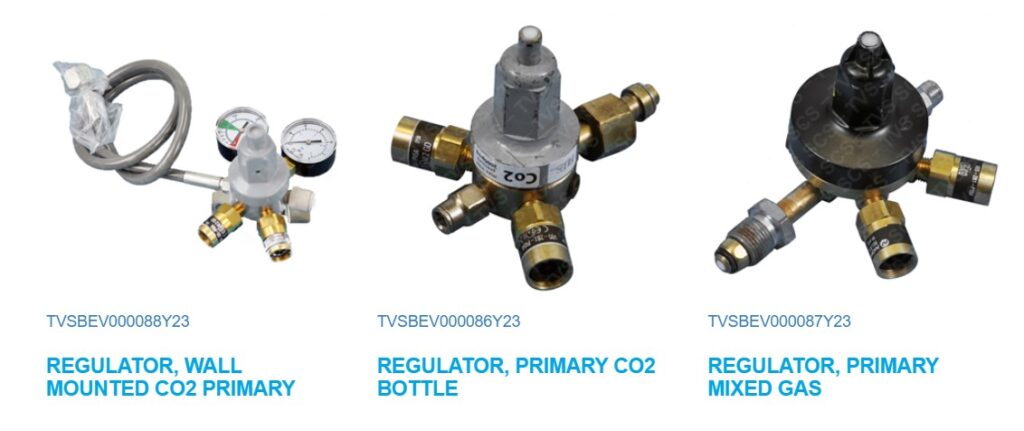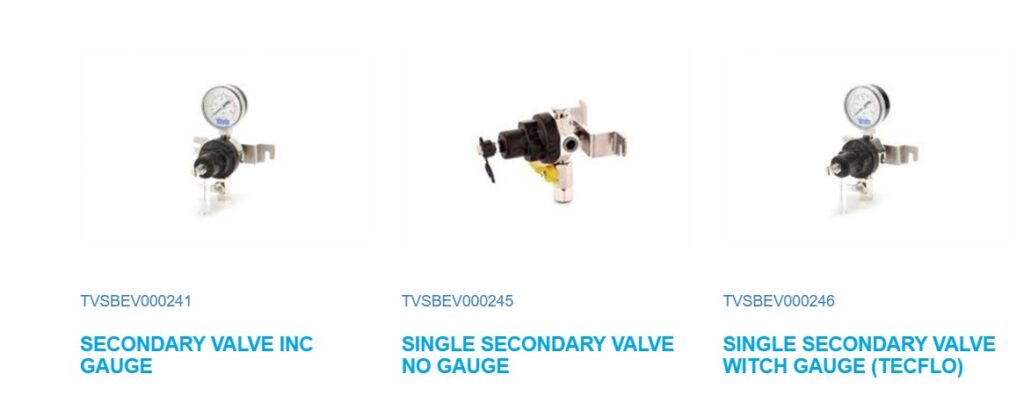Gas pressure regulators, in conjunction with CO2 tanks, air lines, and beer tubing, are essential components of any system that dispenses draught beer. Given that if you dispense beer you are reliant on the presence of gas, specifically CO2 or nitrogen, selecting the right beer gas regulator is a crucial aspect of the system setup.
If you are in need of a beer gas regulator for your system the team here at Drinks Flow has an extensive selection of bar supplies. This includes primary gas regulators, secondary gas regulators along with replacement regulator parts and air distributors.
If you are unsure which type of gas regulator is best suited to the draft beer dispensing system you have we can help. Our experienced team will be only too happy to offer advice on the type of gas regulator best suited to your particular needs.
What are the Different Types of Gas Pressure Regulators
There are a number of different types of gas regulator available and being aware of the differences between them will undoubtedly help you make an informed choice. To help you with this we have highlighted some of these differences below.
Primary Gas Regulator
The primary CO2 regulator, in its basic form, plays a crucial role in regulating the pressure from the tank, enabling a single 5-lb CO2 tank to dispense up to 8 half-kegs. These regulators are available in two main types:
- Single-gauge regulator: This will only measure the dispensing pressure.
- Double-gauge regulator: This measures both the dispensing pressure and how much gas is left in the tank.
However, if you plan to dispense Guinness or other nitrogen-based beers, you’ll require a nitrogen regulator. It functions similarly to a CO2 regulator but has one distinct feature: a female stem designed for attachment to a nitrogen tank.
As an alternative, you can opt for a nitrogen converter piece, such as the CO2 regulator to nitrogen tank adapter, and use a standard CO2 gas regulator for the task.

Secondary Gas Regulator
A secondary gas regulator gives you the ability to dispense multiple kegs at varying pressures. They are furnished with 2 to 5 dials, allowing you to individually monitor and adjust the beer regulator pressure for each individual keg.
However, if you are looking to dispense a number of kegs at the same pressure, a distribution bar will be required. Essentially, this device functions as a sizeable splitter to achieve uniform pressure distribution.

What Parts Make Up a CO2 Tank Regulator
While not an exceedingly complex piece of equipment, a gas regulator comprises several distinct components that you should understand in order to make effective use of it.
Listed Below are the main parts of a gas regulator:
- The Stem – this part is also known as the tank connection as it connects directly to the CO2 tank which can make it susceptible to leaks. If you want to lessen the chance of leaks you should make sure that it is tightened with a CO2 tank wrench.
- The Low Pressure Gauge – This will measure the amount of pressure that is entering the keg.
- The High Pressure Gauge – This will record how much gas is left in the tank
- The Shut Off Valve – Lets you control the gas flow by turning it at a right angle to the air line, effectively turning it on or off.
- The Adjustment Screw – This adjusts the pressure supplied to the keg. Rotating it clockwise raises the pressure, while turning it counter clockwise reduces it. This is how you adjust the CO2 regulator for beer. As you can see, it’s quite straightforward.
In terms of the ideal pressure, the majority of beers should be dispensed at a range of 10-15 PSI for systems utilising CO2, or 30-40 PSI for systems employing nitrogen.
Where is the Best Place to Purchase CO2 Regulators for Beer
At Drinks Flow we offer our customers a wide range of bar equipment gas regulators for both CO2 and N2 tanks along with all associated adapters, tools and replacement parts. All the items we sell are factory tested and commercial grade and will fit perfectly onto any beer dispensing system.
